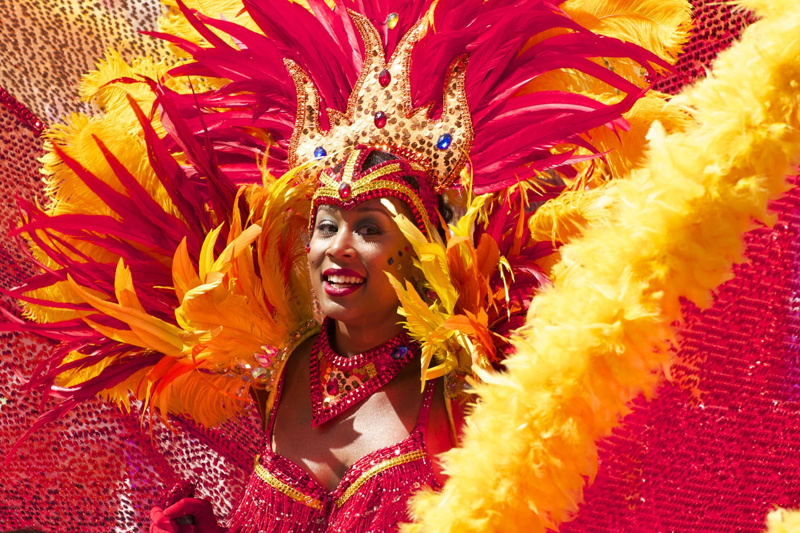Tango Music and Dance

Tango is a type of dance music in 2/4 or 4/4 time that stems from European immigrants in the area of the Rio de la Plata which comprises Buenos Aires, Rosario and Montevideo. Tango is the cultural manifestation of the music of the immigrants from Europe and Africa combined with the sounds of the Native Americans. The new arrivals brought their music, musical instruments and dances. Gradually the Native American music from the Argentine countryside and the African inspired milonga, was enhanced by the polkas, mazurkas, the Habanera and the waltz.
The first tangos were played with guitar, flute, harp, and often an accordion. Tango is customarily played by a sextet, called orquesta típica, of two violins, double bass, piano and two bandoneóns. The bandoneón arrived in Buenos Aires around 1865 and is a type of concertina. The bandoneón is portable and similar to a harmonium or an organium. It is a free reed instrument with a keyboard on each side, the right side has 38 keys, and the left has 33 keys.
Afro Argentinean steps and rhythms mixed with European music and dance composition. The Tango started as a jaunty upbeat music danced and played in the slums and brothels. The Tango moved slowly from the slums to the working and middle class neighborhoods. More talented musicians fostered superior orchestras and more suitable places to dance. Poets connected with the tango movement and created more sophisticated lyrics. Tango began to examine the universal topic of love. At that time in history there was a huge gender imbalance, many men were alone, making solitude, loneliness and melancholy significant topics in tango culture. It emphasizes what is considered the greatest sadness, sex without love. At that point the dance became slow to accompany the tragic lyrics.
In 1917, Carlos Gardel recorded Mi Noche Triste, his first tango song. Mi Noche Triste now and forever associates tango with the feeling of the tragic love revealed in his lyrics. Vocalists became a significant segment of tango and people went to cafés just to listen. Radio stations had their own Tango orchestras. In the 1930’s Tango began to decline when Juan D’Arienzo son of Italian immigrants, known as "El Rey del Compás" (King of the Beat) introduced a new lively and vibrant rhythm giving the dance a new infusion of popularity.
The huge variety of Tango dance styles represents the amazing depth and richness of Tango. Tango relies on the connection between the couple and the musicality of the dancers for its essence and enchantment. The musicality of this style depends on steps on the beat and frequent double time steps. Tango is identified by complex steps. There is awe-inspiring delight to dancing the complicated steps. The steps are part of the emotional connection that expresses the essence of Tango. The utmost attraction of the dance is the connection within the couple which is crucial to make it work, and when done well, is immensely sensuous.
The first tangos were played with guitar, flute, harp, and often an accordion. Tango is customarily played by a sextet, called orquesta típica, of two violins, double bass, piano and two bandoneóns. The bandoneón arrived in Buenos Aires around 1865 and is a type of concertina. The bandoneón is portable and similar to a harmonium or an organium. It is a free reed instrument with a keyboard on each side, the right side has 38 keys, and the left has 33 keys.
Afro Argentinean steps and rhythms mixed with European music and dance composition. The Tango started as a jaunty upbeat music danced and played in the slums and brothels. The Tango moved slowly from the slums to the working and middle class neighborhoods. More talented musicians fostered superior orchestras and more suitable places to dance. Poets connected with the tango movement and created more sophisticated lyrics. Tango began to examine the universal topic of love. At that time in history there was a huge gender imbalance, many men were alone, making solitude, loneliness and melancholy significant topics in tango culture. It emphasizes what is considered the greatest sadness, sex without love. At that point the dance became slow to accompany the tragic lyrics.
In 1917, Carlos Gardel recorded Mi Noche Triste, his first tango song. Mi Noche Triste now and forever associates tango with the feeling of the tragic love revealed in his lyrics. Vocalists became a significant segment of tango and people went to cafés just to listen. Radio stations had their own Tango orchestras. In the 1930’s Tango began to decline when Juan D’Arienzo son of Italian immigrants, known as "El Rey del Compás" (King of the Beat) introduced a new lively and vibrant rhythm giving the dance a new infusion of popularity.
The huge variety of Tango dance styles represents the amazing depth and richness of Tango. Tango relies on the connection between the couple and the musicality of the dancers for its essence and enchantment. The musicality of this style depends on steps on the beat and frequent double time steps. Tango is identified by complex steps. There is awe-inspiring delight to dancing the complicated steps. The steps are part of the emotional connection that expresses the essence of Tango. The utmost attraction of the dance is the connection within the couple which is crucial to make it work, and when done well, is immensely sensuous.
You Should Also Read:
History of the Dance of Tango
Tango Festivals Around the World

Related Articles
Editor's Picks Articles
Top Ten Articles
Previous Features
Site Map
Content copyright © 2023 by Valerie Aguilar. All rights reserved.
This content was written by Valerie Aguilar. If you wish to use this content in any manner, you need written permission. Contact Valerie D. Aguilar for details.


